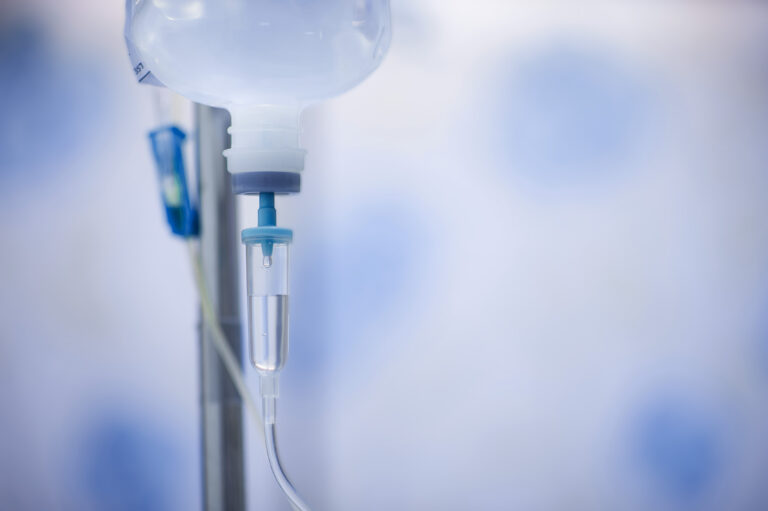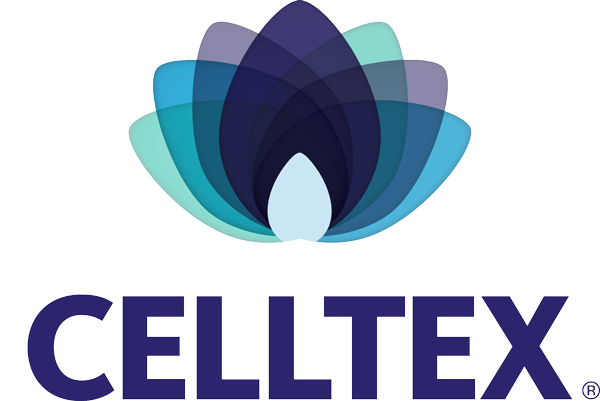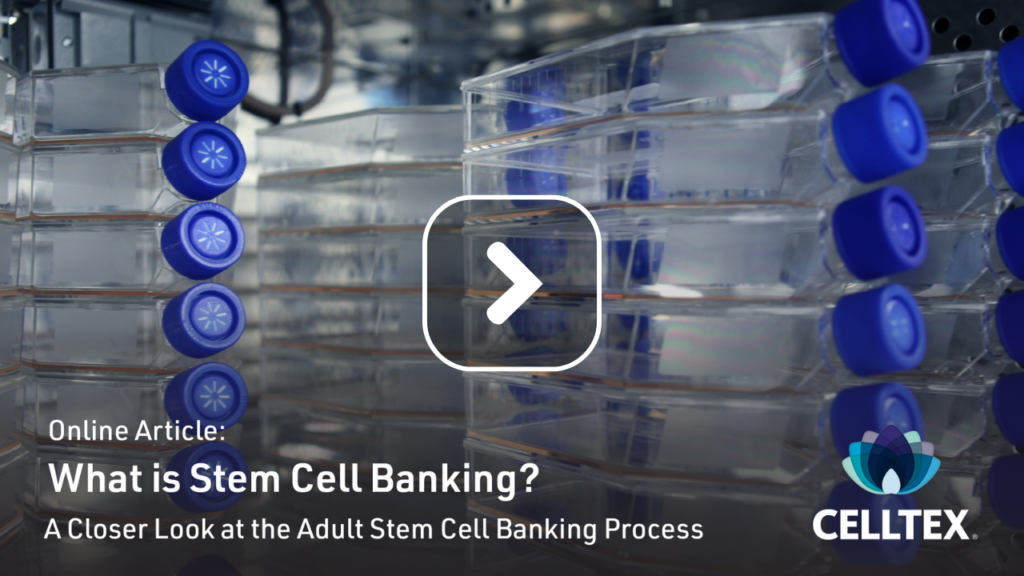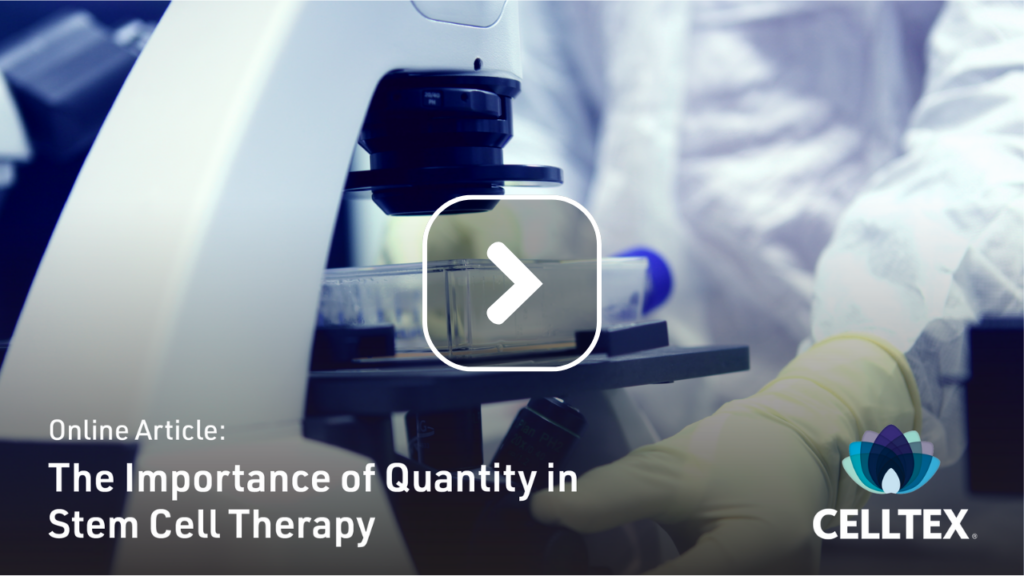Celltex News
What Is Stem Cell Therapy?

In the not-too-distant past, if you suffered from joint pain, your main options were:
- Grin and bear it (more accurately: wince and suffer).
- Take non-steroidal anti-inflammatory drugs (NSAIDs), which can potentially cause liver damage. [1]
- Receive cortisone or hyaluronic acid injections that only provide temporary relief.
- Undergo surgery.
But thanks to advances in stem cell therapy, the potential for increased joint mobility and reduced pain—through a minimally invasive procedure—is a present-day reality. In addition to orthopedic injuries and inflammatory joint diseases, stem cell therapy has shown promise for autoimmune disorders, neurodegenerative disorders, cardiovascular disease, stroke recovery, and more.
As of March 2021, 2,754 clinics throughout the U.S. were offering stem cell treatments (By comparison, as of Jan. 1, 2024, there were 1,956 Target stores in the U.S.). [2], [3]
However, not all stem cell therapies are the same. If you’re looking into various stem cell therapy options, it’s important to do your due diligence. The first step is starting with the basics.
What Is Stem Cell Therapy?
“Stem cell therapy” is often used interchangeably with “regenerative medicine.” Technically, however, stem cell therapy is a specific type of regenerative medicine that utilizes the regenerative properties of stem cells. As mentioned in a recent Celltex article, stem cells are a type of undifferentiated/unspecialized cell with two properties that make them unique: self-renewal and potency.
- The self-renewal property means that the cells can continue to grow and divide to make almost limitless copies/numbers of the same cell.
- Potency refers to the ability of the stem cells to differentiate and mature into different specialized cells such as muscle cells, nerve cells, cartilage cells, etc.
Common stem cell therapy options typically involve either a site-specific injection (to the affected knee joint, shoulder joint, etc.), an IV infusion, or both the site-specific injection and the IV infusion together. The type of stem cell used in these applications is usually the Mesenchymal Stem Cell (MSC).
The basic premise of stem cell therapy is that the introduction of MSCs will alleviate the signs and symptoms of various diseases or health conditions by promoting the repair of diseased, dysfunctional, or injured tissue. These health benefits are accomplished not only through the potency of the MSCs but through other key factors as well.
Why Are MSCs Important in Stem Cell Therapy?
MSCs are best known for their ability to differentiate into multiple cell types (multipotency). For example, MSCs may become new cartilage cells in a damaged joint.
However, their role in regenerative medicine extends beyond their differentiation capabilities. MSCs secrete a variety of bioactive molecules that help support the growth, survival, and function of other cells in the body.
It has been suggested that the bioactive agents secreted by MSCs play a greater role in regeneration and immunomodulation than the cells themselves. [4]
With these factors, MSCs can help:
- Regulate the immune system.
- Reduce inflammation.
- Form new blood vessels (angiogenesis).
- Prevent or reduce fibrosis (the formation of non-functional scar tissue).
- Regulate antioxidant production.
- And more
Furthermore, through the process of homing, MSCs can locate areas of the body where they are needed most and travel there through the bloodstream.
The best part is that you already have these cells in your body. As you’re reading this, they’re actively signaling between other cells to keep your body as healthy as possible.
But if we already have MSCs in our bodies, why do we still have aches and pains or struggle with the symptoms of a chronic condition?
When Would Stem Cell Therapy Be Necessary?
You already have a natural store of MSCs in your body. Why do you need stem cell therapy if you already have MSCs capable of facilitating repair in the body?
There are two primary reasons:
- The aging process: As we age, the number and functionality of stem cells decline because of reduced stem cell replication and an increase in programmed cell death (apoptosis). Environmental factors, cumulative exposure to stressors, and genetic influences also diminish the overall pool of stem cells. [5]
- Severe damage: Even in young people, certain chronic conditions or injuries may cause enough damage that the natural stores of MSCs are insufficient to repair.
Thus, a physician may recommend stem cell therapy to increase the number of stem cells throughout the body or at the site of damage.
What Is Same-Day Stem Cell Therapy?
If you’re considering stem cell therapy that utilizes your own (autologous) MSCs, there are typically two options:
1. Same-day therapy
2. Banking your MSCs for access to high-dose stem cell therapy
The critical difference between the two is that same-day therapy uses a significantly lower quantity of MSCs.
With same-day therapy, MSCs are simply isolated and concentrated from a tissue source for near-immediate use. The quantity of stem cells available for use in therapy is thus limited by the richness (number of MSCs per milliliter/cubic centimeter of the tissue) and volume of the starting material (how much tissue is extracted). As a consequence, same-day therapy generally allows only tens of thousands of MSCs to be administered to the patient.
In contrast, when you bank with Celltex, the MSCs are culture expanded in a laboratory to multiply the number of MSCs available for therapy into the hundreds of millions. By taking the extra step of Adult Stem Cell Banking with Celltex, the therapeutic dose of MSCs available for use is around 20,000x larger than with same-day therapies.
The Same-Day Stem Cell Therapy Process
Same-day stem cell therapy starts with extracting tissue from one area of the body, typically from adipose (fat) tissue or bone marrow. The MSCs are isolated from that tissue sample (through centrifugation), and then directly injected into the site of damage/injury.
Show up. Get stem cells extracted. Receive stem cell therapy the very same day. What’s not to like about that convenience? Indeed, same-day stem cell therapy may be effective for minor soft-tissue injuries. Professional athletes, for instance, may not be able to wait several weeks for their MSCs to culture into hundreds of millions of healthy, viable stem cells, especially if their sport is still in season.
However, as stated above, same-day stem cell therapy is limited by the lower quantity of MSCs that can be obtained from the procedure.
Because same-day stem cell therapy forgoes the culture expansion and banking process, an individual’s stem cells aren’t allowed to grow in quantity before being administered back into their body. Thus, the convenience of same-day stem cell therapy may come at the expense of the overall potential for positive results. Same-day therapy would most likely be of limited value in treating serious injuries or more complex systemic diseases that typically require a higher quantity of MSCs for potential health benefits.
How Does High-Dose Stem Cell Therapy Work?
Banking your stem cells with Celltex is relatively simple and can provide significant benefits to your health. After all, it is the first step in the high-dose stem cell therapy process.
Once a blood test determines your eligibility, you’ll be scheduled for a simple, 30-minute procedure to extract a small amount of body fat.
Once extracted, autologous MSCs are isolated from the tissue sample and carefully cultured to establish your lifetime supply of your MSCs. From there, your bank of MSCs is cryopreserved in a liquid nitrogen dewar (at -300°F) in our state-of-the-art laboratory in Houston, where they’re safely stored for as long you need them.
(In the Houston area? Take a tour of the Celltex laboratory or visit the lab virtually.)
Once a client decides—with the recommendation of a qualified physician—to receive high-dose stem cell therapy, some of your stored MSCs are taken from the bank and further cultured to a therapeutic dose.
The stem cell therapy, using Celltex-banked MSCs, is then performed by a qualified physician using an administration method that’s recommended based on your condition or health needs. Learn more about the routes of administration here.
The bottom line:
Celltex’s technology enables an individual’s stored MSCs to be expanded into quantities exponentially greater than that of current same-day stem cell clinic offerings, greatly increasing the potential for positive results when therapeutic application is necessary.
This difference in cell quantity, along with the compatibility from using one’s own cells contributes to the superior quality of Celltex-produced MSCs. Celltex-produced MSCs have the potential to succeed where same-day stem cell therapies have failed before.
Learn More About Celltex
Interested in learning more about Celltex and stem cell banking or therapy? Request a virtual brochure, watch any of our educational webinars, or contact us directly.
References
- Bessone F. (2010). Non-steroidal anti-inflammatory drugs: What is the actual risk of liver damage?. World journal of gastroenterology, 16(45), 5651–5661. https://doi.org/10.3748/wjg.v16.i45.5651
- Turner L. (2021). The American stem cell sell in 2021: U.S. businesses selling unlicensed and unproven stem cell interventions. Cell stem cell, 28(11), 1891–1895. https://doi.org/10.1016/j.stem.2021.10.008
- Number of target locations in the USA in 2024. ScrapeHero. (2024, January 29). https://www.scrapehero.com/location-reports/Target-USA/
- Han, Y., Yang, J., Fang, J., Zhou, Y., Candi, E., Wang, J., Hua, D., Shao, C., & Shi, Y. (2022). The secretion profile of mesenchymal stem cells and potential applications in treating human diseases. Signal transduction and targeted therapy, 7(1), 92. https://doi.org/10.1038/s41392-022-00932-0
- Al-Azab, M., Safi, M., Idiiatullina, E., Al-Shaebi, F., & Zaky, M. Y. (2022). Aging of mesenchymal stem cell: machinery, markers, and strategies of fighting. Cellular & Molecular Biology Letters, 27(1), 69. https://doi.org/10.1186/s11658-022-00366-0
About Celltex Therapeutics
Celltex Therapeutics Corporation is an international leader in cryopreservation, or banking, and culturing of autologous, adipose-derived Mesenchymal Stem Cells (MSCs) for therapeutic use and has remained committed to improving and maintaining clients’ quality of life. Celltex has the unique ability to do what no one else can: isolate, expand and cryopreserve your own MSCs to create your master cell bank, all from one small sample of your adipose tissue. This bank of MSCs can then be used to produce hundreds of millions of clinical-grade, genetically stable MSCs that are available for therapeutic use. To learn more about Celltex, visit www.celltexbank.com.
Post Tags: adult stem cell therapy, stem cell therapy
More Recent News
Exploring Regenerative Medicine Beyond Stem Cell Therapy
For many, stem cell therapy is to regenerative medicine what Google is to internet searches. Yet, there are other procedures within the regenerative medicine field that may be recommended depending on the health concern being addressed.
In this article, we explore several regenerative medicine options, including platelet-rich plasma (PRP), bone marrow aspirate concentrate (BMAC), stromal vascular fraction (SVF), and exosomes.
Read MoreWhat Makes MSCs So Promising? A Deep Dive on Mesenchymal Stem Cells
Present in the body throughout one’s lifespan, adult Mesenchymal Stem Cells (MSCs) can be used in many types of regenerative medicine. This article explores how MSCs work in the body and what makes them suitable for therapeutic application.
Read More


